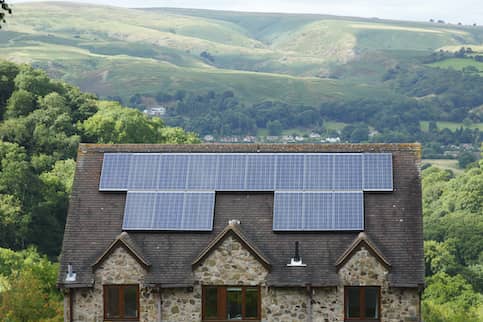When you’re buying or refinancing a home, your lender will likely order a home appraisal to make sure that the property is worth the amount of the loan. Should you default, your lender can minimize their losses by selling the home.
Largely consisting of an exterior inspection of a building by a licensed real estate appraiser, a drive-by appraisal allows borrowers to obtain an estimated value quickly and cost-effectively for their apartment, condo, townhouse, or single or multifamily home.
Drive-by appraisals have become an increasingly popular option since the COVID-19 pandemic, which has impacted current trends in real estate. They come with pros and cons.
What Is A Drive-By Appraisal?
One of the steps to buying or refinancing a property is the home appraisal, which lenders require to make sure that property is worth at least as much as the amount they’re lending you. A drive-by appraisal, or summary appraisal, is a home appraisal that is conducted without a licensed professional needing to enter your home.
A licensed appraiser will examine the home from the outside, usually from a public roadway, to estimate the home’s market value based on the property’s exterior condition, the state of the surrounding area and real estate records.
Most mortgage providers require that a full appraisal of both a home’s interior and exterior be conducted before they will approve a mortgage loan. However, a bank or mortgage lender may give approval for a drive-by appraisal in select instances, such as for refinance appraisals.
See What You Qualify For
Buy A Home
Discover mortgage options that fit your unique financial needs.

Refinance
Refinance your mortgage to have more money for what matters.
Tap Into Equity
Use your home’s equity and unlock cash to achieve your goals.
How Does A Drive-By House Appraisal Work?
To the casual observer, a drive-by appraisal looks like an individual walking around and taking pictures of a home while scribbling down notes as they go, but behind the scenes there is actually much more taking place during this assessment.
Research
Before they visit your home, the appraiser will research sales of homes that are like yours in terms of style and location. They do this by looking at recent comparable sales (comps) in the area.
This will give the appraiser a general idea of the selling cost of homes like yours. In times of robust sales, this is a relatively straightforward process, but when sales are few and far between, or if you live in a rural area with very few like properties, this may be a more complex task.
Observation
Of course, research alone cannot replace looking around the neighborhood and checking out the home itself.
Neighborhood
The appraiser will also take a drive through the neighborhood to get a sense of whether its homes are increasing or declining in value. They’ll consider the overall look of the area and how well the neighbors maintain their property.
Exterior Of The Home
The appraiser will then drive by to observe the exterior and curb appeal of your home. They will walk around the exterior to take pictures, measurements and notes on anything they observe, jotting down any questions they have.
Valuation
After taking photos of the outside of your home, and getting a sense of comparable properties, the appraiser will review their notes, research and pictures to finalize their appraisal report and estimate the home’s appraised value.
What Is A Desktop Appraisal?
By way of contrast, a desktop appraisal is done entirely online without the need for a home appraiser to visit the house itself.
The desktop appraisal valuation and research process is typically facilitated by leveraging a sophisticated software solution to tap into tax records, property listings and real estate data to cross-reference information and compile a report. As the name indicates, a desktop appraisal can be performed right from a licensed appraiser’s computer desktop.
What Is A Hybrid Appraisal?
A hybrid appraisals involves some combination of the tools used by appraisers to assess a home’s value. Often, a third-party inspects the home and provides its findings to the appraiser to consider alongside the market research.
When Does A Drive-By Appraisal Make Sense?
Drive-by appraisals are popular with many home buyers or sellers due to their lower cost compared to traditional appraisals. Because they are limited to an external inspection, drive-by appraisals may also be advantageous to property sellers if the interior of the home has issues or is less spacious than property records indicate. As a general rule though, reasons why a drive-by appraisal may occur include:
- An appraiser may find that it is preferable to perform a drive-by appraisal while a home is in a stage of foreclosure.
- Noting that a homeowner with a lot of equity built up in their property is a lower risk to lenders, a drive-by appraisal may suffice for those looking to obtain a home equity line of credit (HELOC) or refinance on their mortgage.
Pros And Cons Of A Drive-By Appraisal
As stated above, there are both benefits and drawbacks associated with drive-by appraisals. When determining whether to proceed with one, you’ll want to consider the following.
Pro: Drive-By Appraisals Cost Less And Can Be Completed More Quickly
Because appraisers are free to visit your home at their convenience, and because the interior portion of the appraisal is deemed unnecessary, a drive-by appraisal costs less.
Pro: Less Stress On Homeowners
You can’t help but feel anxious when preparing for something like a home appraisal, and you’ll feel twice as anxious if you are in the middle of renovations, or have kids or pets. It can be a home improvement or home cleaning hassle to get everything looking its best for appraisal day. Room half-painted? Toys strewn about the house? A drive-by appraisal will not see those flaws.
Con: Appraised Values May Be Less Accurate
If you’re refinancing and worried about a low appraisal, a drive-by appraisal might not work in your favor, as it may fail to take into account any interior renovations that could raise the value of your home. From a lender’s perspective, an appraiser may miss structural damages or other flaws that are only visible from inside the house, rendering the valuation inaccurate.
Con: Online Resources May Be Inaccurate
Speaking of inaccuracies, there is always the risk that the online research your appraiser accesses is simply wrong. For example, multiple listing services (MLS) property data from previous sales of the home and the tax data that appraisers have to draw upon may be outdated.
Con: Appraisers Can’t Measure Interior Living Areas
It can be very difficult to know how big a home is on the inside just by looking at the outside. If your home was designed to look modest, but is quite spacious, and you’re worried about a low appraisal, you may want to consider asking for a full appraisal.
FAQs About Drive-By Appraisals
Those considering a drive-by appraisal may have a number of frequently asked questions (FAQs) that spring to mind. Here are the answers to some of the more common ones.
Can a drive-by appraisal be used to refinance?
Drive-by appraisals are now a common practice when refinancing a mortgage, as a home with a lot of equity built up poses a lower risk to lenders.
How do the costs of a drive-by appraisal compare?
A full appraisal can commonly cost $300 – $500, though they could be more than $600 or even up to $2,000 depending on the area you live in, the size of your home, etc. According to Home Advisor, drive-by appraisals cost between $100 and $150.
The Bottom Line: Drive-By Appraisals Are Convenient But There Can Be Downsides For Homeowners
The core benefit of a drive-by appraisal is that an appraiser doesn’t need to come inside your home to conduct one. It’s cheaper and less stressful for homeowners, but it also omits valuation of some amenities and interior features that could possibly increase the home’s value.
Find A Mortgage Today and Lock In Your Rate!
Get matched with a lender that will work for your financial situation.

Victoria Araj
Victoria Araj is a Staff Writer for Rocket Companies who has held roles in mortgage banking, public relations and more in her 15-plus years of experience. She has a bachelor’s degree in journalism with an emphasis in political science from Michigan State University, and a master’s degree in public administration from the University of Michigan.












